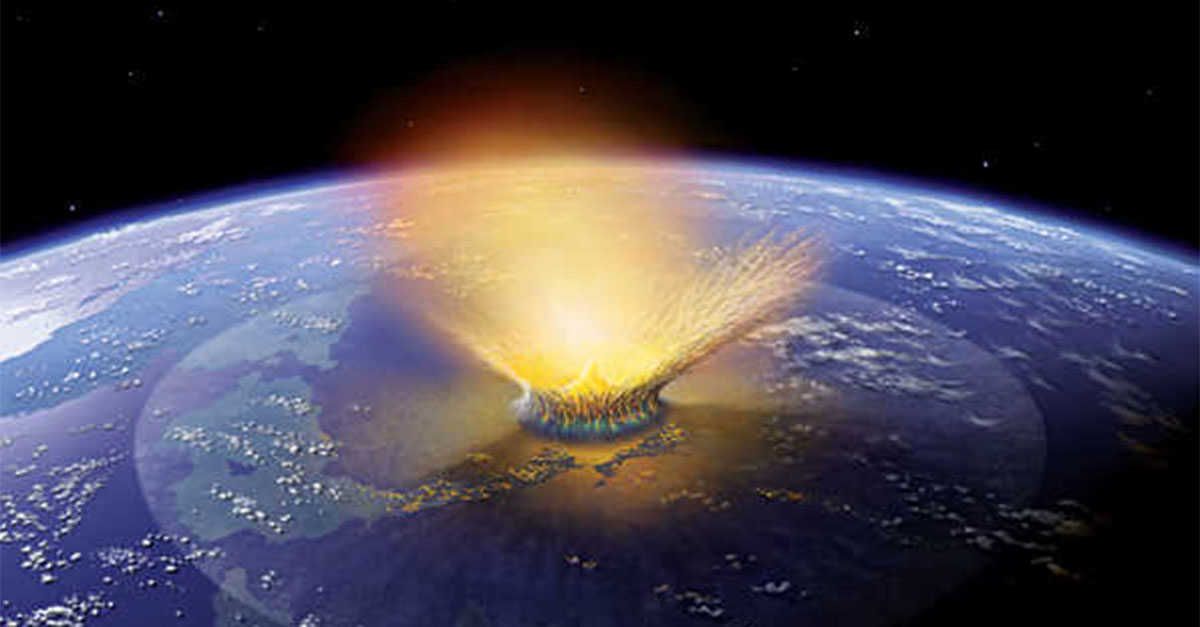How do you track an asteroid that hit the Earth over 60 million years ago? By using a combination of geology and computer simulations, at least according to a team of scientists from the Southwest Research Institute (SwRI). Those methods might have let them solve a long-standing mystery of both archeology and astronomy – where did the asteroid that killed the dinosaurs come from?
Continue reading “Scientists Figure out how the Asteroid Belt Attacked the Dinosaurs”Here’s the Asteroid Hayabusa2 is Going to be Visiting Next
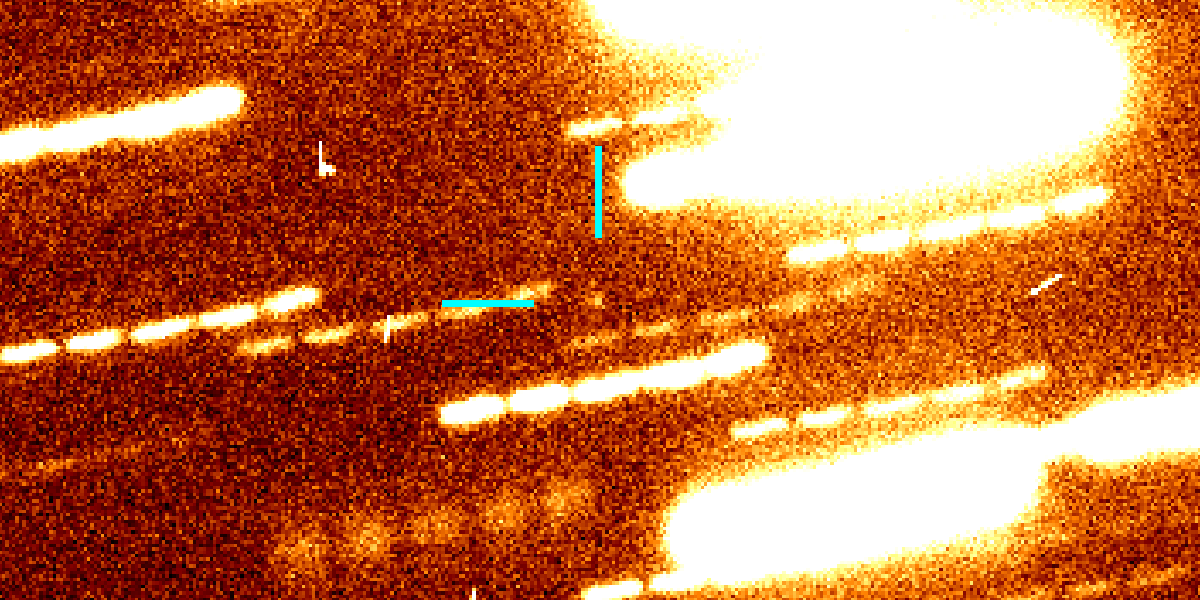
Check out this image of asteroid 1998 KY26 from the Subaru Telescope. It’s not exactly beautiful, but it’s not intended to be. The compelling thing about this image isn’t its attractiveness, it’s the context. This small asteroid is the next target for Japan’s Hayabusa2 spacecraft.
Continue reading “Here’s the Asteroid Hayabusa2 is Going to be Visiting Next”Interstellar Oumuamua Was a Dark Hydrogen Iceberg

When Canadian astronomer Robert Weryk discovered `Oumuamua passing through our Solar System with the Pan-STARRS telescope, in October 2017, it caused quite a stir. It was the first interstellar object we’d ever seen coming through our neighbourhood. The excitement led to speculation: what could it be?
There was lots of fun conjecture on its origins. Was it an alien spacecraft? A solar sail? Or something more prosaic?
Continue reading “Interstellar Oumuamua Was a Dark Hydrogen Iceberg”The dinosaur killing asteroid hit the Earth at the most devastating possible angle
There are bad days, and then there are really bad days. 65 million years ago, life on Earth – especially if you were a dinosaur – experienced the worst possible bad day, as a giant meteor came crashing down to the surface of our planet, unleashing an inferno followed by decades of nuclear winter. And the worst part? It didn’t have to be so bad.
Continue reading “The dinosaur killing asteroid hit the Earth at the most devastating possible angle”Astronomers Discover a Tiny New Temporary Moon for the Earth. Welcome to the Family 2020 CD3
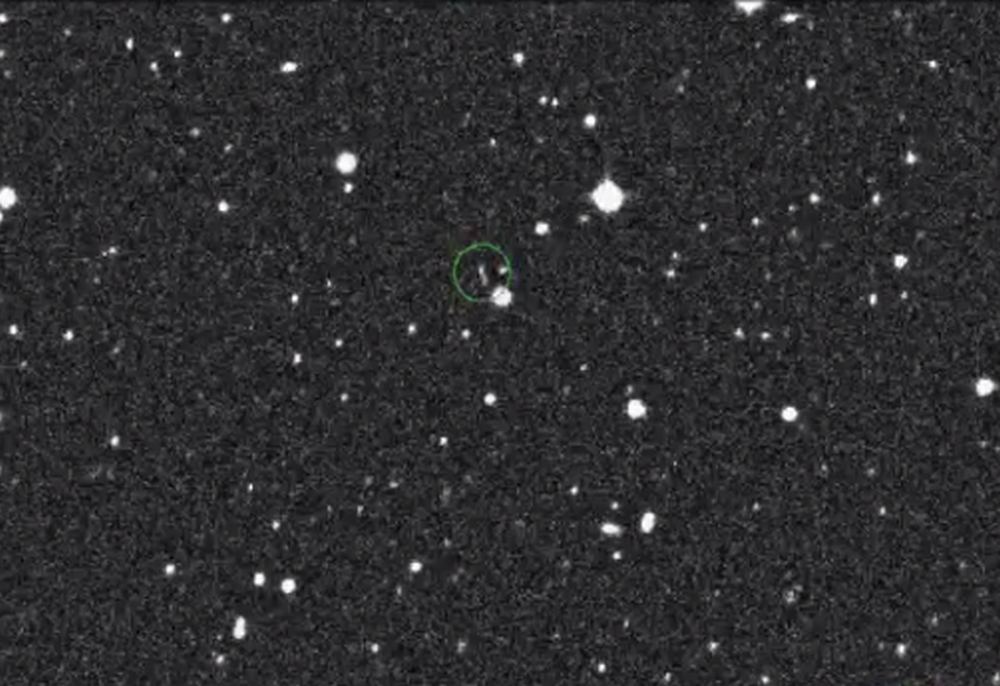
Astronomers are increasingly interested in Near-Earth Objects, or NEOs. There are ongoing efforts to find them all and catalog them all, and to find out which ones might pose a collision threat. Now some astronomers with the NASA-funded Catalina Sky Survey have found a new, tiny, temporary moon for Earth.
Continue reading “Astronomers Discover a Tiny New Temporary Moon for the Earth. Welcome to the Family 2020 CD3”Asteroid Ryugu is a “Fragile Rubble Pile”
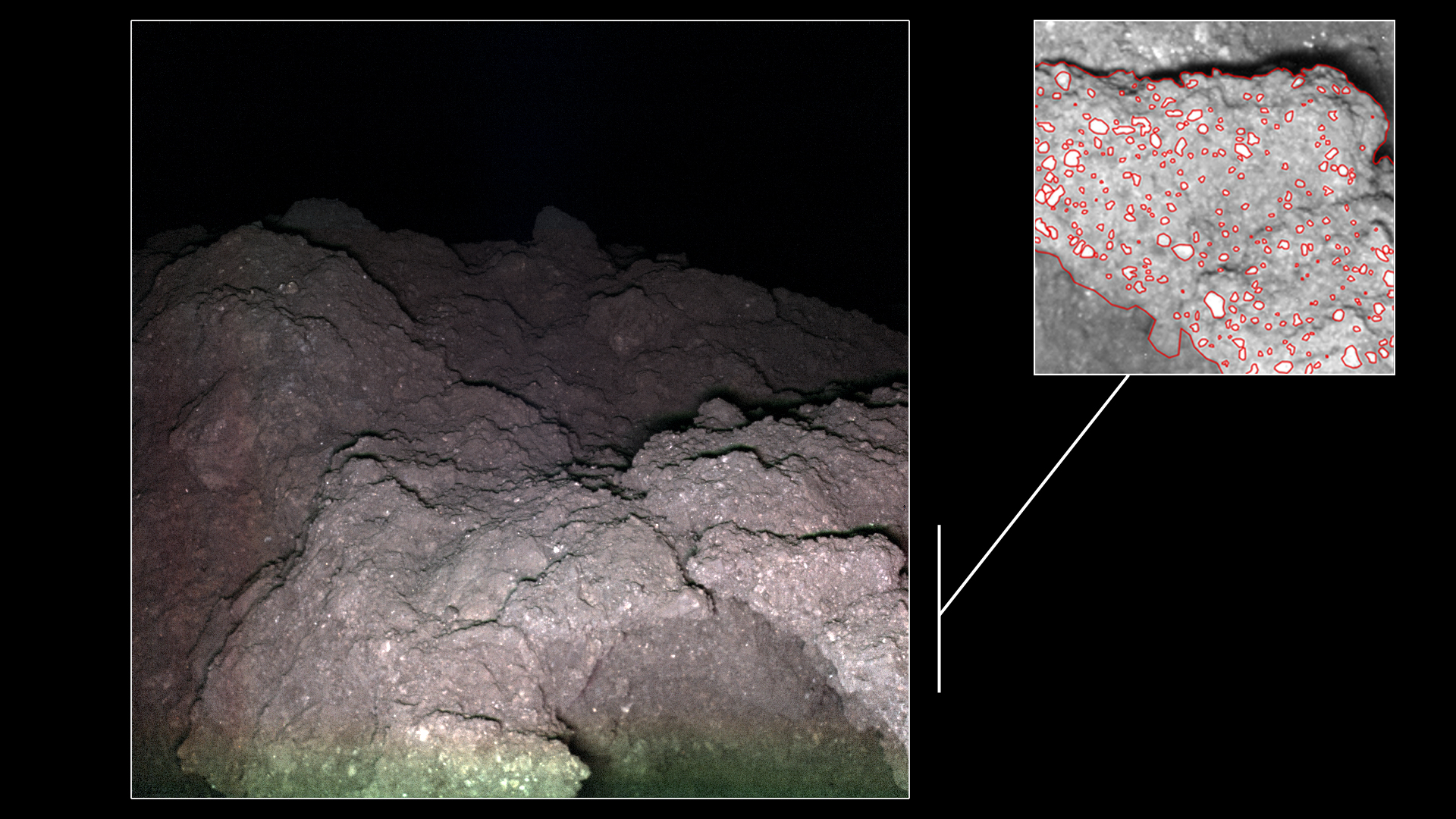
When Japan’s Hayabusa 2 spacecraft arrived at asteroid Ryugu in June 2018, it carried four small rovers with it. Hayabusa 2 is primarily a sample-return mission, but JAXA (Japan Aerospace Exploration Agency) sent rovers along to explore the asteroid’s surface and learn as much as they could from their visit. There’s also no guarantee that the sample return will be successful.
They chose Ryugu because the asteroid is classified as a primitive carbonaceous asteroid. This type of asteroid is a desirable target because it represents the primordial matter that formed the bodies in our Solar System. It’s also pretty close to Earth.
The sample from Ryugu, which will make it to Earth in December 2020, is the big science prize from this mission. Analyzing it in Earth-based laboratories will tell us a lot more than spacecraft instruments can. But the rovers that landed on Ryugu’s surface have already revealed a lot about Ryugu.
Continue reading “Asteroid Ryugu is a “Fragile Rubble Pile””Hayabusa1’s Samples of Itokawa Turned up Water That’s Very Similar to Earth’s Oceans
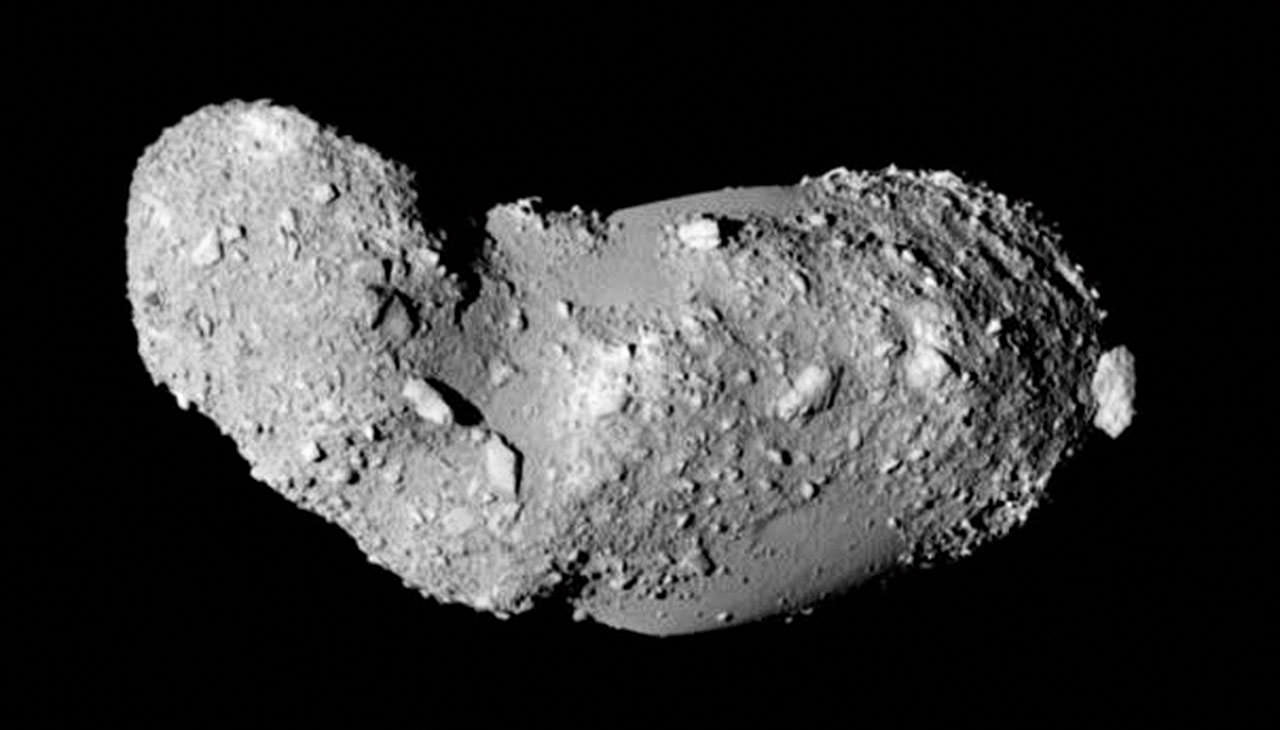
Right now, the Japanese Aerospace Exploration Agency‘s (JAXA)
Hayabusa2 spacecraft is busy exploring the asteroid 162173 Ryugu. Like it’s predecessor, this consists of a sample-return mission, where regolith from the asteroid’s surface will be brought back home for analysis. In addition to telling us more about the early Solar System, these studies are expected to shed light on the origin of Earth’s water (and maybe even life).
Meanwhile, scientists here at home have been busy examining the samples returned from 25143 Itokawa by the Hayabusa1 spacecraft. Thanks to a recent study by a pair of cosmochemists from Arizona State University (ASU), it is now known that this asteroid contained abundant amounts of water. From this, the team estimates that up to half the water on Earth could have come from asteroid and comet impacts billions of years ago.
OSIRIS-REx has Finally Caught up with Asteroid Bennu. Let the Analysis and Sample Collection Commence!
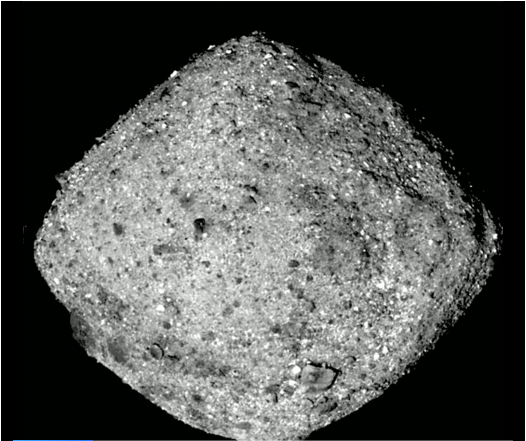
NASA’s OSIRIS-REx spacecraft has reached its destination and is now in orbit around asteroid Bennu. The spacecraft travelled for over two years and covered more than 2 billion kms. It will spend a year in orbit, surveying the surface of the Potentially Hazardous Object (PHO) before settling on a location for the key phase of its mission: a sample return to Earth.
That Interstellar Asteroid ‘Oumuamua Probably Came From a Binary Star System

On October 19th, 2017, the Panoramic Survey Telescope and Rapid Response System-1 (Pan-STARRS-1) telescope in Hawaii announced the first-ever detection of an interstellar asteroid – I/2017 U1 (aka. ‘Oumuamua). Since that time, no effort has been spared to study this object before it leaves our Solar System. These include listening to it for signs of communications, determining its true nature and shape, and determining where it came from.
In fact, the question of this interstellar object’s origins has been mystery since it was first discovered. While astronomers are sure that it came from the direction of Vega and some details have been learned about its past, where it originated from remains unknown. But according to a new study by a team of astronomers from the University of Toronto, Scarborough, ‘Oumuamua may have originally come from a binary star system.
The study, titled “Ejection of rocky and icy material from binary star systems: Implications for the origin and composition of 1I/‘Oumuamua “, recently appeared in the Monthly Notices of the Royal Astronomical Society. The study was led by Alan P. Jackson, a research fellow at the Center for Planetary Sciences (CPS) at the University of Scarborough, and included members from both the CPS and the Canadian Institute for Theoretical Astrophysics (CITA).
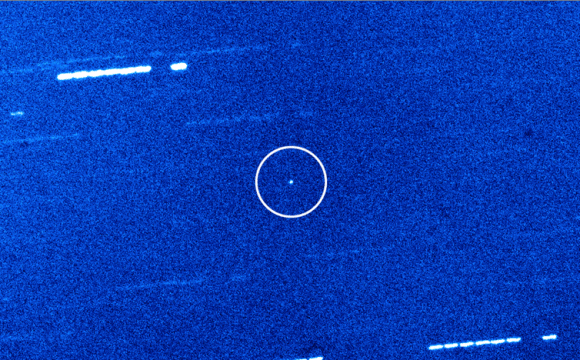
For the sake of their study, Jackson and his co-authors considered how in single star systems (like our own), asteroids do not get ejected very often. For the most part, it is comets that become interstellar objects, mainly because they orbit the Sun at a greater distance and are less tightly bound by its gravity. And while ‘Oumuamua was initially mistaken for a comet, follow-up observations by the European Southern Observatory (ESO) indicated that it is likely an asteroid.
With the help of other astronomers, it soon became apparent that ‘Oumuamua was likely an oddly-shaped rocky object that measured about 400 meters (1312 ft) long and was tube-shaped. These findings were rather surprising to astronomers. As Jackson explained in a recent Royal Astronomical Society press release:
“It’s really odd that the first object we would see from outside our system would be an asteroid, because a comet would be a lot easier to spot and the Solar System ejects many more comets than asteroids.”
As such, Jackson and his team hypothesized that interstellar objects like ‘Oumuamau are more likely to be ejected from a binary system. To test this theory, they constructed a population synthesis model that considered just how common binary star systems are in the Galaxy. They also conducted 2000 N-body simulations to see just how efficient such systems would be at ejecting objects like ‘Oumuamua.
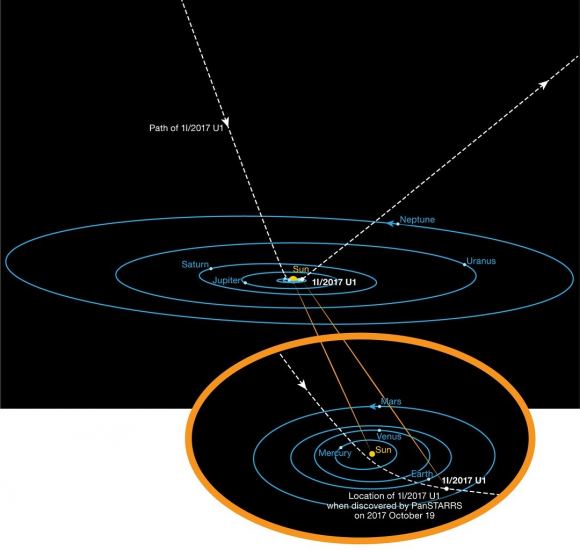
What they found was that binary stars are produced at a rate of about 30% by number and 41% by mass, and that rocky objects like ‘Oumuamua are far more likely to be ejected from binary than single star systems. Based on ‘Oumuamua’s rocky composition, they also determined that the asteroid was likely ejected from the inner part of its solar system (i.e. inside the “Ice Line”) while the system was still in the process of formation.
Lastly, they determined that rocky objects are ejected from binary systems in comparable numbers to icy objects. This is based on the fact that the presence of a companion star would mean that more material would become unstable due to stellar encounters. In the end, this material would be more likely to be ejected rather than accreted to form planets, or take up residence in the outer reaches of the star system.
While there are still many unanswered questions about ‘Oumuamua, it remains the first interstellar asteroid that scientists have ever known. As such, its continued study can tell us a great deal about what lies beyond our Solar System. As Jackson put it:
“The same way we use comets to better understand planet formation in our own Solar System, maybe this curious object can tell us more about how planets form in other systems.”
The team’s findings were also the subject of a presentation that took place at the 49th Lunar and Planetary Science Conference, which took place this week at The Woodlands, Texas.
Further Reading: Royal Astronomical Society, MNRAS
Project Lyra, a Mission to Chase Down that Interstellar Asteroid

Back in October, the announcement of the first interstellar asteroid triggered a flurry of excitement. Since that time, astronomers have conducted follow-up observations of the object known as 1I/2017 U1 (aka. `Oumuamua) and noted some rather interesting things about it. For example, from rapid changes in its brightness, it has been determined that the asteroid is rocky and metallic, and rather oddly-shaped.
Observations of the asteroid’s orbit have also revealed that it made its closest pass to our Sun back in September of 2017, and it is currently on its way back to interstellar space. Because of the mysteries this body holds, there are those who are advocating that it be intercepted and explored. One such group is Project Lyra, which recently released a study detailing the challenges and benefits such a mission would present. Continue reading “Project Lyra, a Mission to Chase Down that Interstellar Asteroid”

